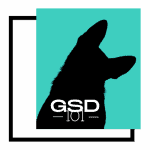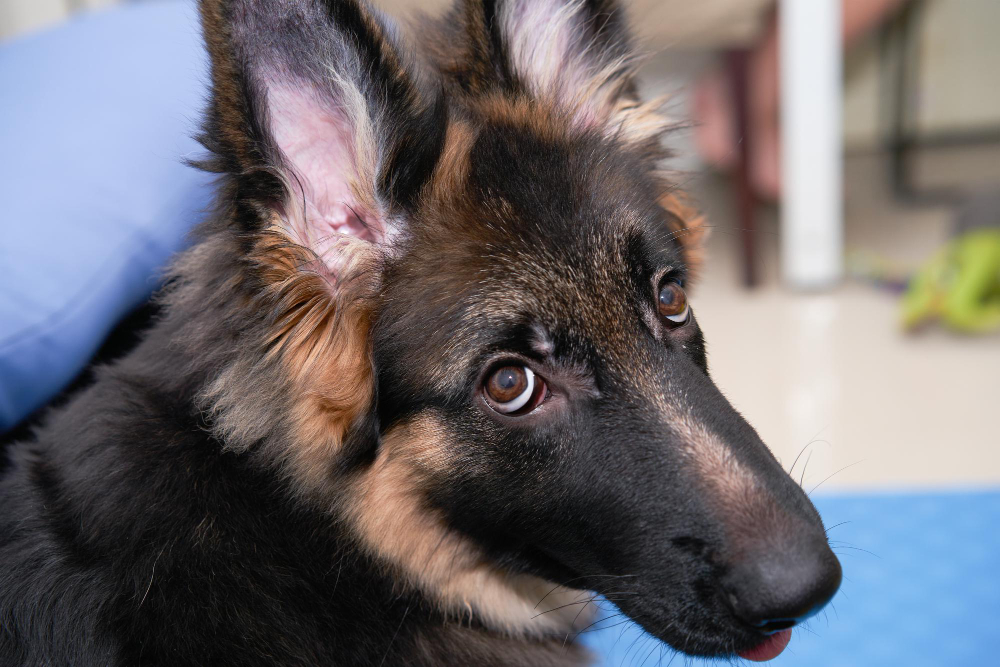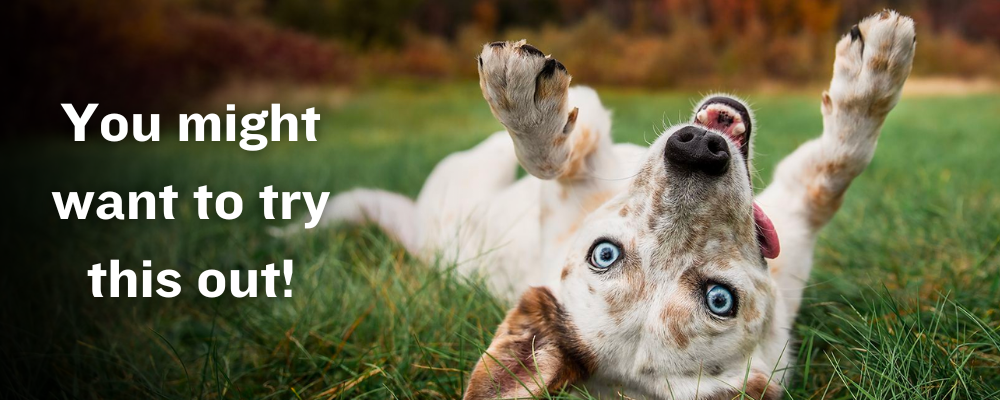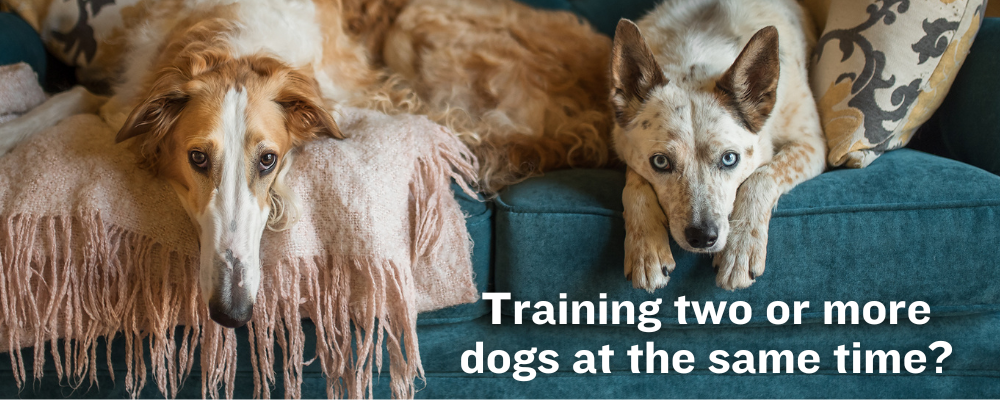Disclosure: This post contains affiliate links. We may earn a small commission if you decided to make a purchase, at no additional cost to you.
You are probably feeling anxious about your female German Shepherd’s first heat cycle. From pain to discomfort and mood swings, your dog will likely go through a lot. But don’t worry, you are not alone. The following information will help you make informed decisions to ensure that your GSD is comfortable and safe during her first heat cycle.
If your female German Shepherd is in her heat cycle, she may become restless around males, have a bloody vaginal discharge, or change her appetite. These are all common symptoms for a female GSD in her heat cycles. It’s important to be aware of these symptoms so that you can take appropriate action to ensure her safety during this time.
Have a plan
The best thing you can do with your German Shepherd during her first heat cycle is to have a plan in place. Otherwise, your dog may become anxious and stressed out. And this could lead to behavior problems, so it’s best to get ready for this event.
Luckily, there are many things you can do to ensure that your dog is healthy and happy during her time of the month. These are some common questions people ask about their dogs when they experience their first heat cycle.
The four stages of a female dog’s heat cycle
The heat cycle or menstrual period (estrus cycle) in dogs is not just about bleeding.
It is a complex interaction of hormonal, behavioral, and physical changes. Each individual is different, and may or may not show signs to the same extent. Their body goes through a lot of chances and transformation, which breaks down into four stages and they are:
| Stage | Symptoms / Behavior | Duration |
| Stage 1: Proestrus | Vulva begins to swell and your dog begins to bleed. | 7 to 10 days |
| Stage 2: Estrus | The vulva is enlarged but softens a little. Bleeding may reduce or stop. Your dog is ready to mate during this time. | 5 to 10 days |
| Stage 3: Destrus | Most of the swelling is gone, but the vulva may remain slightly enlarged. | About 2 months |
| Stage 4: Anestrus | Previous symptoms are gone and the body is preparing for the next heat cycle. | About 4 months |
- Stage 1: Proestrus is the first stage that most owners start noticing the vulva begins to swell and your dog begins to bleed. This stage lasts for an average of 9 days, but can range anywhere from 7-10 days.
- Stage 2: Estrus is the stage when the female is receptive to the male. The vulva is enlarged but softens a little. Bleeding may reduce or stop. This stage will last for 5 to 10 days. The fertile period occurs during this time.
- Stage 3: Destrus is the stage where the female is no longer receptive to the male. This stage lasts for about 2 months.
- Stage 4: Anestrus is the stage where the body allows the uterus to prepare for the next heat cycle. This stage will last for about 4 months.
Each stage has differing signs related to behavior, physical or clinical changes, hormonal changes, physiologic changes, and cytologic (vaginal smear) changes.
When does an intact female German Shepherd start her first heat cycle?
German Shepherds are large dogs. This means they are more likely to wait a bit longer to have their first heat. Female German Shepherds might go into their first heat as young as 6 to 12 months of age. The smaller the breed the earlier they get into their first heat.
How long does the first heat cycle last in German Shepherds?
Heat usually lasts between 2-4 weeks. Early in the cycle, a female dog may not be receptive to male dogs, although some are receptive through the entire cycle. It can be shorter or longer and you’ll know the cycle is over when all her vulva returns to its normal size and there’s no more bleeding or discharge.
How long does a German Shepherd bleed in the first heat?
A dog in heat can bleed for the first 7 to 10 days. The bleeding reduces around the 10-day mark.
How often does a female German Shepherd go into heat?
An intact female dog usually goes into heat about every six months. Younger and older dogs tend to have a more irregular heat cycle. It’s not uncommon for a young female dog to go into heat 2-3 months after another.
Many larger breeds, such as Great Danes, will have delayed starts and longer periods between each heat cycle. Since German Shepherds are large dogs, you may only see one heat cycle a year.
How do you know if a female dog is in heat?
Sometimes, these signs are not apparent even when a dog is in heat. You will find a few drops of bloody discharge on the floor where she’d been sitting. Her vulva will be swollen and noticeably red. You may also see her licking its genital area as a result.
Is it possible for a German Shepherd’s heat cycle to go without being noticed?
It is sometimes called “silent heat”. They will have a very short heat then stop. And a month or so later there will be another short one. Very seldom do they have a silent heat, but it’s possible.
How will female dogs behave differently if she goes into heat?
- Change in appetite: Your dog may suddenly become pickier in its eating habits.
- Licking of her genital area: Your dog might be licking her genital area more to clean up any discharge.
- Rubbing her rear end: Your female might lift her tail to rub her rear end against various objects, such as a wall or fencing.
- Frequent urination: If your dog is starting to urinate more frequently and in smaller amounts, this could be a sign she’s “marking” as she goes into heat. This is the easiest way to spread the message to other dogs that she’s going into heat.
- Lack of energy: Some dogs become less energetic as they go into heat. If your dog seems unusually tired, or not as interested in playing with you, it could be a sign they are beginning their heat cycle.
- More Irritable with other dogs: As their hormone levels change, you might see your dog become less tolerant of other dogs or even cats in the house. Sometimes might see aggressive behaviors toward both female and male dogs.
- Desire to escape and seek a mate: The hormone change will drive her to follow her instincts in seeking out a male to mate with. She might even try to escape your home or yard to check out what options are nearby.
- Flirtatious behavior: Once a female dog enters the estrus phase of her cycle, she is receptive to the attention of male dogs and might seek it out. She might start to present her rear and flag her tail to one side when around male dogs.
Watch this video where a German Shepherd owner shares his experience in handling her German Shepherd’s first heat:
What you should do when your female German Shepherd is in heat:
1. Create a safe space for your dog to rest
With all the hormonal changes, she might want to seek out a quiet place to be alone. You can make this area comfortable by including a mat which can be especially useful for thick or long-coated dogs.
Playing soft music may comfort your dog. Plugging in a pheromone diffuser (like this one by Adaptil) near their safe space may help her to calm down. Of course, have plenty of interactive dog toys and chews for her.
2. Have sanitary supplies ready
When your dog begins to have discharge during her proestrus and estrus phases, “dog diapers” can help keep your home clean. Every dog’s flow is different and is often heavier and more bloody in the beginning.
You can purchase disposable dog diapers or invest in a washable cloth diaper to use with disposable liners. You can place a disposable dog maxi pad inside of the diaper during heavier flow to reduce the frequency of laundering the cloth diaper.
3. Manage dog-dog interactions in your home
If you have a multi-dog household, you might notice a shift in dynamics between your dogs. Your female dog in heat might be on the grumpy side and overreact when approached by a dog housemate.
Supervise interactions between your dogs to make sure that they are being respectful of each other. Use baby gates to provide separate safe areas for each of them.
If you have an intact male in the home, they should always be kept separate from a female in heat to prevent mating. Even when kept separate, your intact male will become stressed as they can still smell a female in season and might go to great lengths in efforts to get to her.
If you have tried all the previous tips and your male German Shepherd still isn’t leaving females in heat alone, you should consider sending him to a doggy daycare as a little vacation!
Even if your male dog is neutered, he might still pester your female dog — supervise and separate as needed.
4. Stay away from dog park and keep your female dog on a leash when going outside
Female dogs approaching their heat cycle can attract both neutered and intact dogs close and far. This can cause her undue stress as she seeks to avoid attention from other dogs.
It might also trigger a fight between other dogs as they compete for her attention. Your best bet is to keep your intact female dog in a closed yard. And if you have to take her outside, always put her on a leash to prevent accidental mating and unplanned pregnancy.
5. Accompany and supervise your dog in your fenced yard
You’d be surprised at the lengths male dogs will go to gain access to a female in heat. Climbing over or digging under a fence is worth the effort for them as they follow their instincts to mate.
Accompany your dog while she’s outside in your fenced yard to make sure there are no unwanted visitors.
Female dogs can also feel the need to wander in search of a mate, so you want to make sure they don’t decide to go on an adventure.
Bottom line: Be extra kind and gentle
When a female German Shepherd goes into heat, it can be a time of stress, restlessness, and frustration for her as well as everyone (including other animals) in the house.
If you prepare yourself and your household, and know how to take care of your dog, you will know exactly what to do to make it through. Never scold your pup if she happens to make a bloody mess, just calmly reassure her while you clean it up. Make sure to watch her closely and give her some extra love and attention.
More on German Shepherd Health and Care
- German Shepherd Weight Chart: Is My Dog Overweight or Underweight?
- How to Make German Shepherds Gain Weight?
- How Cold Can German Shepherds Tolerate? (Caring Tips Included)
- What is the Best Temperature for German Shepherds to Thrive?
- Do German Shepherds Shed? Tips and Care Guide for “German Shedders”
- Can You Stop German Shepherds from Shedding?
- When Will My German Shepherd Puppy’s Ears Fully Stand Up?
- German Shepherd First Heat 101: What You Need to Know
You may also like:



